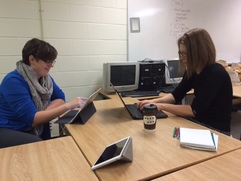
Recently, I coerced Katherine into sharing some reflections on her experiences with the Inquiry process. (Her class began a few weeks earlier than mine, and we are learning from their work!) As I am on Step 10 of Report Card writing, I decided that today would be the day to finally edit her comments and post them.
This post is lengthy, but totally authentic -- I've done only minimal editing, in order to preserve teacher voice. We hope it will inspire you -- if you've not already begun -- to explore Inquiry learning in your own classroom! ~ V. Teschow
Every year I set a goal for myself to improve my teaching. Sometimes the goal is selfish and motivated by personal gain, like reducing the number of hours outside of school spent assessing student products, and sometimes the goal is motivated by a desire to improve a particular facet of student learning.
_
This year the goal was both…I wanted to merge my Language Arts and Social Studies programs, thereby reducing my assessment workload, AND I wanted to improve student learning by focusing on the inquiry process. I wanted to cover the strands of Language Arts (reading, writing, etc.) through the Social Studies lens of “Is Canada a fair and just country?”.
My hope was that I would reduce the volume of “marking” that I always seem to have, and promote the skills of inquiry in my classroom.
Step One: Get Support!
I have been doing inquiry learning in my classroom for a few years and I knew that this new project was too big for me to broach on my own, so I contacted my Instructional Coach, Lise, and a fellow grade 6 teacher, Vera, for help.
Together we created collaborative learning centres that focused on different communities within Canada (Indigenous Canadians, LGBTQ Canadians, Black Canadians, Female Canadians, Chinese Canadians, Japanese Canadians, and South Asian Canadians). We chose these particular communities to reflect the diversity of our classrooms, the curriculum itself, and because these groups have experienced marginalization in some way.
Our vision was to provide students with a variety of resources with which they could begin to formulate an answer to our overarching question, “Is Canada fair and just?”
In hindsight, I realize that there were many communities that we did not include, that should have been reflected in our learning centres (e.g., Differently Abled Canadians).
How Much is "Enough"?
In preparing these learning centres and trying to compile a variety of resources (video, websites, news articles, books, etc.), I came to the conclusion that I could probably have spent years just sourcing information about the topic, but I had to say “no more”.
I also realized that through vetting each of the sources, I myself learned a ton of information about each of these communities.
So, after a month or so, we had together created six beautiful, glossy learning centres for our students housed in brand new bins; graphic organizers on which students could record their thinking; and an extensive assessment form on which to record our observations of student learning.
Handing it off to the Students
I have to admit when I looked at those bins that represented our learning journey as teachers, I was a little worried about putting our work into the hands of students who may (or may not) treat the resources with the respect that I felt they deserved.
Logistics
My students spent twelve, forty-minute periods perusing the materials we provided for them. Each student was able to visit three different learning centres.
I assigned them the first centre, and they were given choice for the second two centres. During this time, my instructional coach and I watched the students and engaged them in conversations, recording our observations of the skills and thinking demonstrated.
I quickly discovered that our extensive assessment form, co-created prior to the beginning of the inquiry, was almost useless.
We had selected a variety of curriculum expectations as “look fors” and although these points were important, some of them, like “summarizes key information from videos”, were difficult to observe without directly comparing student graphic organizers to the videos (which would not have met my goal of reducing my “marking”!), and some students didn’t even watch videos at all, choosing instead to focus their time on reading books and articles.
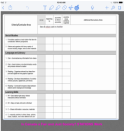 | (Later, when my colleague began the work with her students, our tracking form evolved into a Noteability file and then Google form, thanks to the support of our tech-enthusiastic instructional coach! This provided a somewhat more manageable and flexible tool for tracking student work as well as our feedback to individual students.) |
I knew in advance of beginning these learning centres that students were going to need a lot of support in terms of selecting main ideas, identifying key vocabulary, developing questions, and making connections between topics and to big ideas (Charter of Rights and Freedoms, UN declaration of Human Rights)… I just didn’t realize how much support they would need!
I felt incredibly overwhelmed by all that I needed to do to support the growth of the students: I had to teach them critical thinking skills like determining relevancy and importance of historical facts. I had to teach them how to create higher order-thinking questions. I had to teach them how to read complex texts and use fix-up strategies to overcome obstacles in their reading. The list of all the things I needed to teach them could go on forever.
RAN Bulletin Board
One of the strategies that I felt most beneficial for both the students and myself, was the use of RAN (Reading and Analysing Non-Fiction Strategy).
Now, I have to admit that over the course of my career, I have often attempted to use similar charts to help students track their own learning, but I always failed to follow through. Take the KWL Chart as an example. I was always great at getting students to fill out what they knew on the chart as a primer to a lesson, a way to activate that prior knowledge that we as educators know is important for students to access in order for new learning to take place.
Getting students to jot down what they wondered was a little more difficult because sometimes, they didn’t know what they didn’t know.
I always started out with the greatest of intentions of using the KWL chart to be able to show students how much they had learned over the course of the unit, but if I’m being perfectly honest, I’m not sure that I’ve ever gone back and had students fill out the “Learned” section of the chart.
So when Vera first proposed the use of RAN, I hesitantly agreed to give it a go. I was overwhelmed by the number of sections on the chart (What we think we know, What we wonder, What we learned, What we couldn’t prove and/or misconceptions, What we still wonder)…if I couldn’t follow through with a KWL Chart, what was I going to do with RAN…and how would it even fit on a piece of paper???
I came up with a solution. I used a large bulletin board in an open space of our school. I thought, if I put this up in this public space, I will feel obligated to use it and by using the bulletin board, the chart became a collaborative document of our learning. Also, because the space in which this bulletin board is housed must be signed out for use, I had to commit to using the space, thereby “forcing” me to make time in my schedule to reflect on our learning journey.
Independent Inquiry: Taking Differentiation One Step Further
After the collaborative inquiry learning centres, students were encouraged to choose a topic that they would be interested in pursuing further. Although the independent portion of the inquiry did not need to be focused on one of the communities already studied, it did have to relate to our overarching question, “Is Canada fair and just?”
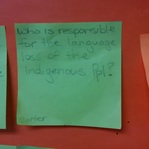
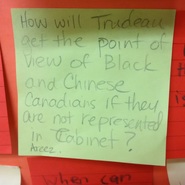
They were asking questions like, "What do LGBTQ Canadians feel is being (or can be) done to create equality in Canada?" or, "Why were Residential Schools a good idea in the minds of Canadians of the past, and what do they think of their idea now?".
Could They Succeed?
Once their questions were selected, I started to worry that I as setting my students up for failure. How could eleven- and twelve-year-olds try to answer questions that are so complex, when educated adults would have difficulty?
I was worried that they wouldn't find enough relevant information, I was worried that the information they did find would be outside their "zone of proximal development", I was worried that they wouldn't have the grit to persevere with a long term, difficult task and wade through the quagmire that is the internet.
Although my students found it difficult, they did persist with the investigation into their questions. Along the way, they needed a lot of support from me and I spent most of my days walking around the classroom helping students figure out the best way to do a Google Search (No, you can't just put your question into the search bar and expect an answer), reminding students to use criteria for judgement to determine the credibility of a source (just because it's on the internet doesn't make it true), and asking prompting questions like, "Is there a different perspective?", in hopes that they would delve more deeply into their topic.
It Won't Be Perfect Every Day
Inevitably there were days when I just didn't have it in me to be "on", and it was a struggle to conference with just a few students, and there were other days that my FitBit told me I'd logged 10,000 steps before lunch!
The whole process was utterly, undeniably exhausting...and awesome!
When the students starting sharing with me their inquiry reflections, I was amazed at their journey. Students who had once not known what Residential Schools were began to recognize their long-term impacts and the responsibility of all Canadians to right that wrong. Students who had not once known the about racist policies of governments past (e.g., Chinese Head Tax) were able to identify the importance of not sweeping such dark days of history under the rug, but instead bringing them to light and learning from them so as not to make the same xenophobic mistakes again (cue images of Syrian refugees arriving at Canadian airports). Students who had once not known for what the acronym LGBTQ stood, were wanting to make documentaries about what the government is doing to support equity for the LGBTQ community. The journeys were varied in depth and breadth, but there is no doubt in my mind that each student made a journey.
One's Student's Journey
One student in particular comes to mind: Sirob. Sirob began his journey wondering why LGBTQ people were different from "normal" people. (He was at the LGBTQ Canadian learning centre with a few of his peers when this statement was made.)
The group and I had a discussion about the word "normal", and what it might mean or imply in this context.
I struggled with how to have this conversation: I needed him to understand that by saying heterosexuals were "normal", he was implying that all others were "abnormal" and as such, it was not appropriate to use the word in our inclusive classroom. At the same time, I didn't want to shut him down because I could see that he was genuinely trying to understand something for which he had so little (or such conflicting) schema.
I felt like I was walking a high wire tightrope...step too far to the right and misconceptions go unchallenged, step too far to the left and a student feels that my class is not a safe place for taking risks...either way, the results are disastrous!
I'm sure that with some students I missed my footing on that high wire, but with Sirob, balance was maintained. He continued on his journey and even reached out to his community. He interviewed people who identified as being a part of the LGBTQ community with the intention of creating a documentary. I had the opportunity to sit in on one of his interviews and was nearly brought to tears. Sirob was articulate, respectful, and able to bring a lot of knowledge to the conversation about equity for the LGBTQ community.
Assessment "How-To": A Few More Thoughts
If you were to stop reading here, inquiry sounds great, and it is, but it doesn’t come without its obstacles.
One such obstacle was monitoring student progress, especially during the month-long independent portion of the unit.
With 28 students per class, and only 40 - 80 minutes per day in which to provide feedback, I sometimes found it difficult to get around to every student. As a result, there were some days when I didn't even get to speak to every child.
I also found that students who were vocal and advocated for themselves took up much more of my time than those who waited for me to come to them. I started using a class list to keep track of whom I had spoken to and whom I had not (seems pretty logical, but with all the other planning, it was something we had overlooked).
I created an "Inquiry Process Checklist" to make sure that I was giving feedback on each stage of the inquiry process, hoping that specific feedback on the process would help students to engage more deeply in each stage.
Work-Life Balance?
Because the students were so intensively involved with our work around this inquiry, I was constantly on e-mail after school hours reading work students had shared with me and providing additional feedback. I'm pretty sure that my goal of lessening my workload was put out to pasture. I am by nature a workaholic, and I found that with this inquiry, creating a balance between work and life became even more difficult.
Everyday, I felt that I was making withdrawals from my energy bank account, but, every time I was tired, exhausted, and thought I had nothing left, a student would share something with me that would be so profound that it was like making a deposit of energy into that very same account.
My point is this: inquiry is hard...really hard...for everyone. It's hard for the teachers to manage; it's hard for the students to navigate. But in the end, all my students have progressed, each in their own way, as evidenced by the development of the inclusive and inquisitive nature of their language, and the growth mindset most of them demonstrated over time. Some journeys were short and some were long, but everyone, including me, made a journey, and isn't that the point of learning?
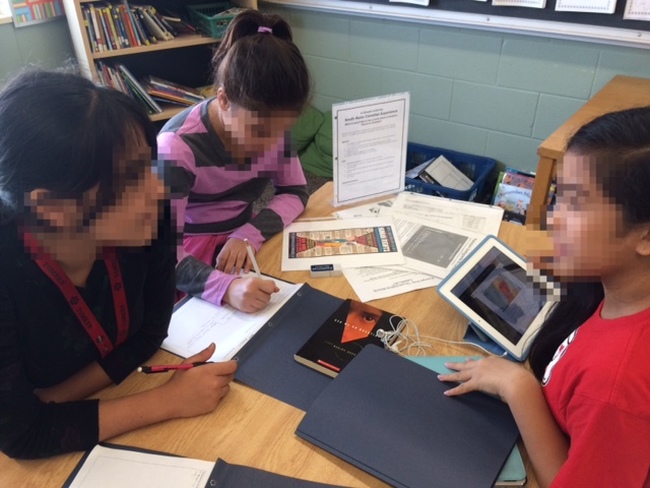
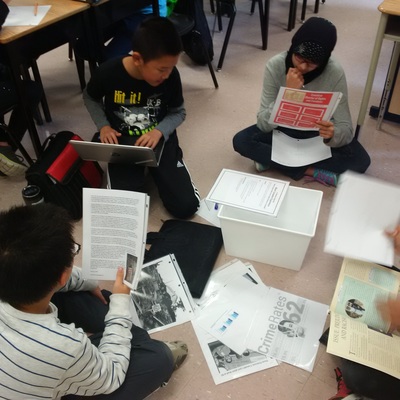
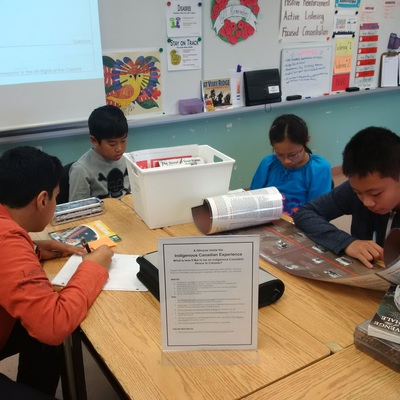
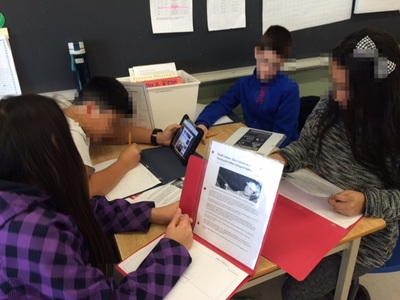
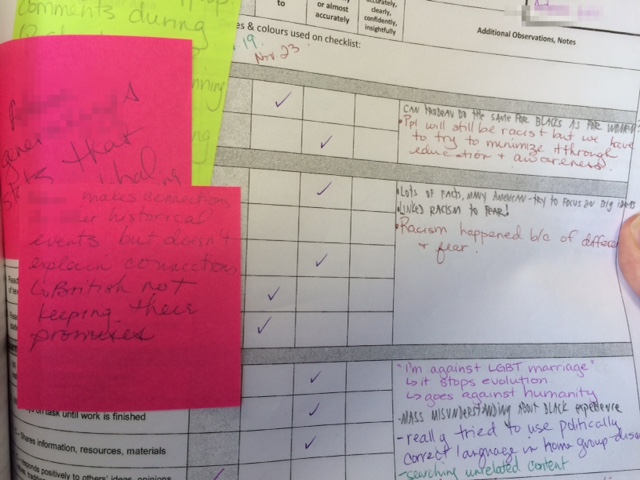
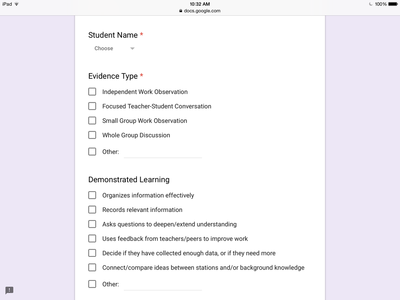
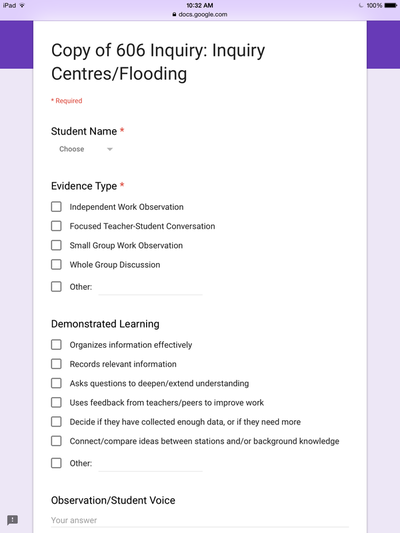
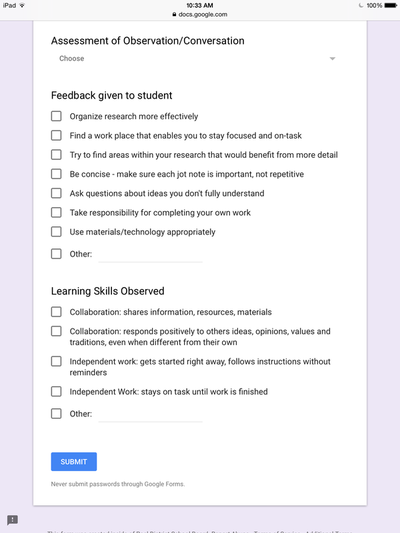
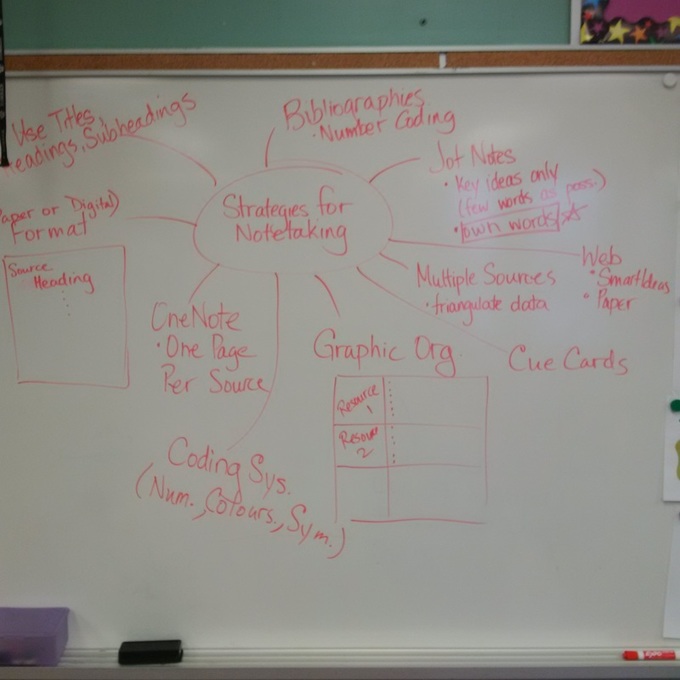
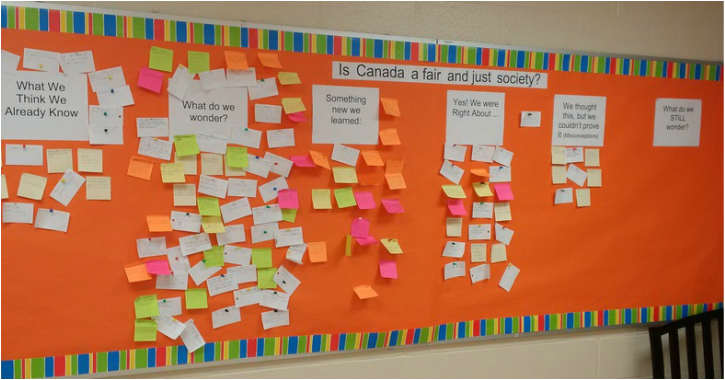
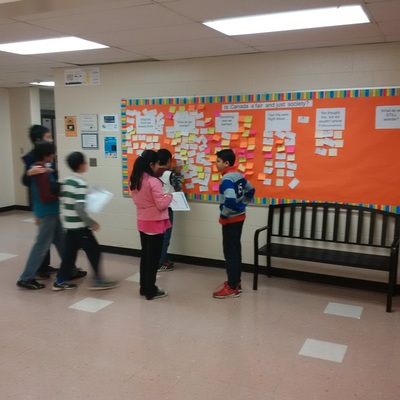
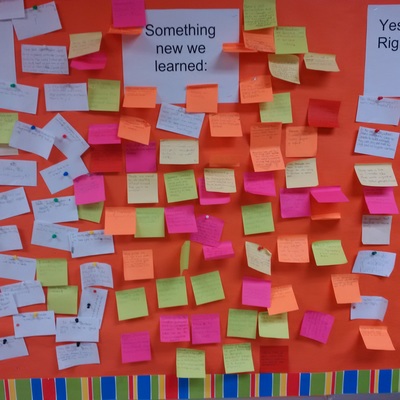
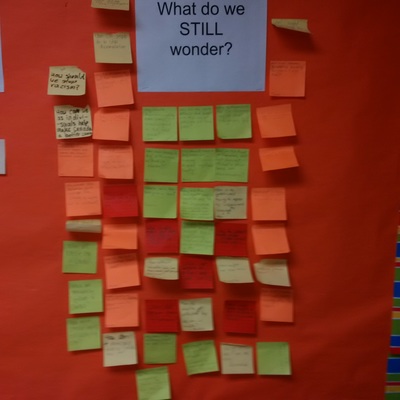
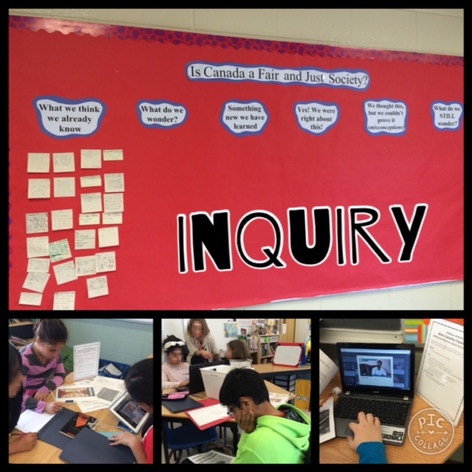
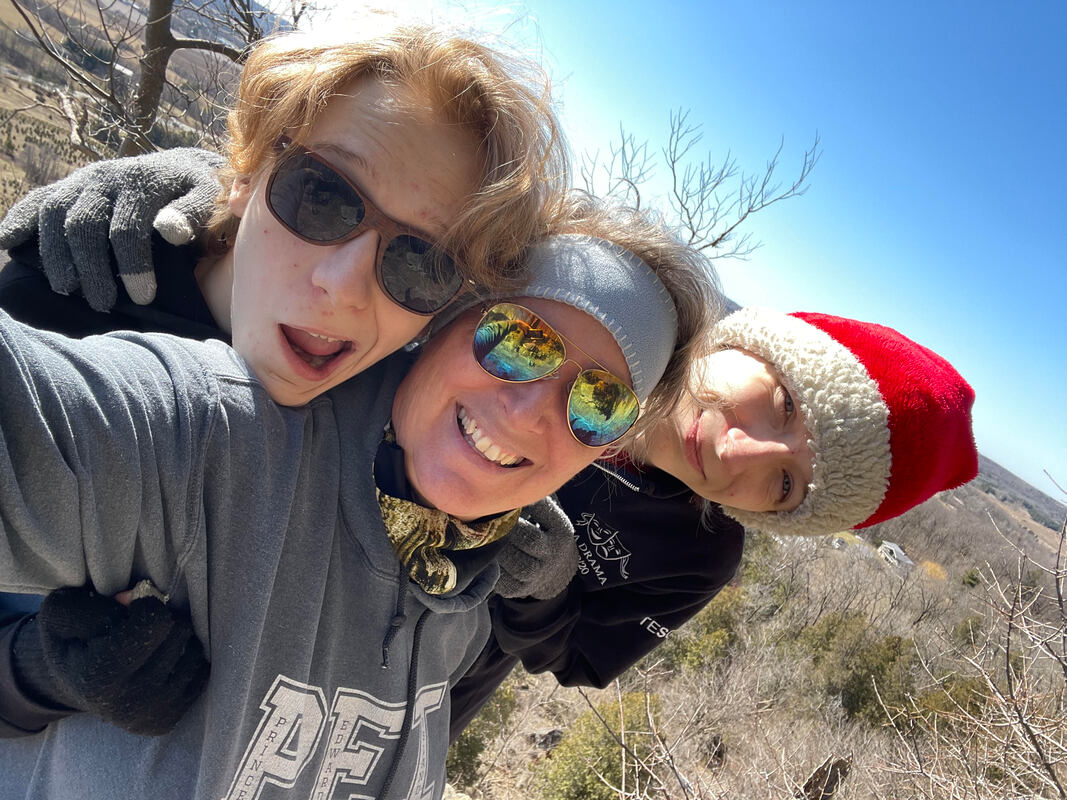
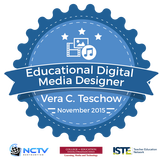
 RSS Feed
RSS Feed